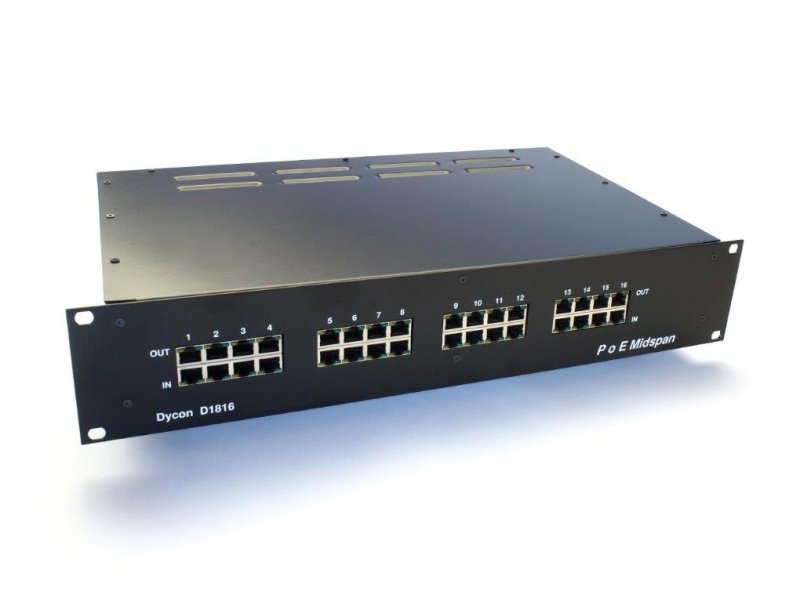
Guidance on using Power-over-Ethernet to drive security system equipment
The advent of Power-over-Ethernet has given installers an excellent way of simplying the way that security systems are powered and connected.
What is Power-over-Ethernet (PoE)?
Put simply, it is the ability to provide a certain amount of power to drive local peripherals over existing network cabling removing the need to provide separate power supply units adjacent to those devices.
Why is this good news for the security industry?
Imagine how much easier, and cheaper, an installation would be if you didn’t have to fit 230vAC spur points all around a site simply to power the PSUs that are required just to power peripherals such as intruder detection devices, CCTV cameras, access control readers, in fact, anything that needs 12Vdc or 24Vdc. If you are running a network cable to a device you don’t need any other power, the same network connection can give you up to 35W, more than enough to power most cameras and many other devices
Any other benefits?
If you have to move a device because of building alterations, or because the risk has changed, with PoE all you do is move the network cable, no need to search for a suitable location to pick up 230vAC!
If you are using the PoE to drive Point-of-Sales equipment, like cash tills, this can mean a rapid refit rather than a point out of commission for days
But be careful, you can easily select the wrong PoE solution!
You will find many products including switchers and controllers that will tell you that they are PoE-enabled, but you need to check, carefully, the actual power delivered or you may find that you don’t have enough available to drive all your devices! Installers often find that a system that claims it ‘can power eight or twelve devices’ actually struggles to cope with even half that!
To be really sure, choose a Mid-span solution
Equally, it is important to note that standard PoE delivers only 15W per channel, is that really sufficient to drive what you are connecting?
Higher-powered, Mid-Span PoE units, ones that conform to IEEE802.3af and IEEE802.3at PoE PLUS, deliver a useful 35W per channel, more than adequate for most security applications.
All Dycon PoE units conform to this higher specification.
The savings don’t stop there though!
All Dycon advanced power supply units, including the D1800 PoE range, use switched-mode technology which is the greenest solution available offering over 85%-90% efficiency as opposed to less than 30% with most traditional linear power supply units.
What does that mean in real terms?
On a 1A 12Vdc power supply, you could save nearly 121KW p.a by using a switched mode equivalent. For the end user that could mean, if you are paying 14p per KWh, savings of up to £17 p.a. in electricity charges. Now multiply that by the number of PSUs that you are using and you can see the savings start to mount up, and will continue to grow as energy costs rise.
The Dycon D1800 PoE range uses the same advanced switched mode technology as the Dycon stand-alone PSUs so these cost savings can also be achieved across your networked devices.
Dycon D180X PoE Range Features
Perfect for IP network based cameras (fixed or PTZ), access control systems, POS terminals, IP phones and other IP devices: -
Available with 4, 8, 12 and 16 ports (see above) - 35W simultaneous outputs across all ports
Simple and cost-effective way to provide power for IP peripherals
Simple plug-in installation with 2 x RJ-45 input/output connectors per port
Efficiency higher than 85% at full rated output
Unmanaged outputs mean that no programming is required to choose the best path
Work with all switchers and controllers
